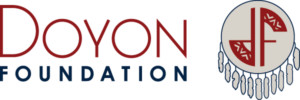“I’m not just a language learner. I’m Deg Hit’an”
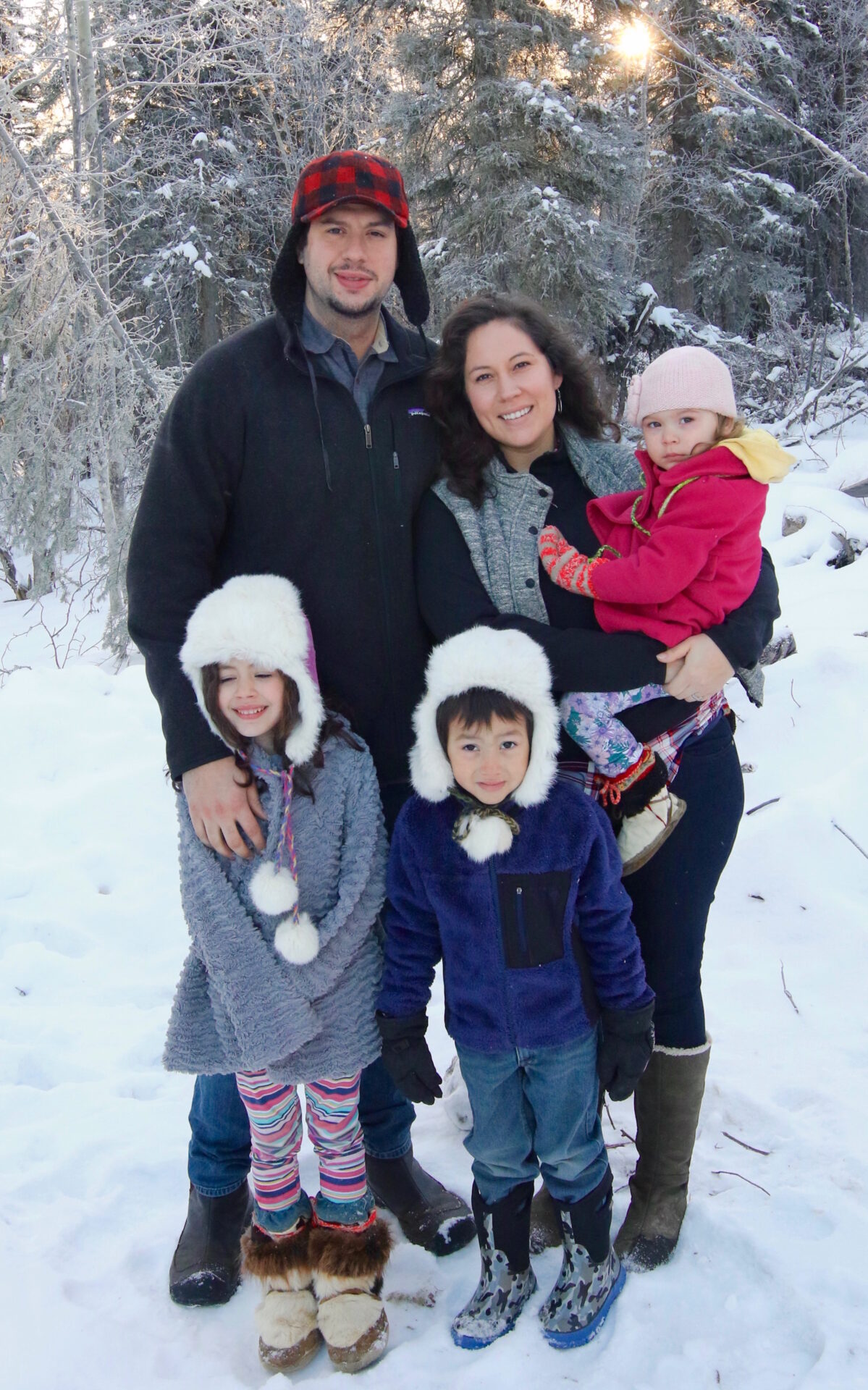 A board member of Doyon, Limited and Doyon Foundation, Sonta Roach lives in her hometown of Shageluk where she’s a teacher in the Iditarod Area School District. She and her husband, Chevie Roach of Tok, have three children: Sydney, 7; Ryder, 5; and Emry, 4.
A board member of Doyon, Limited and Doyon Foundation, Sonta Roach lives in her hometown of Shageluk where she’s a teacher in the Iditarod Area School District. She and her husband, Chevie Roach of Tok, have three children: Sydney, 7; Ryder, 5; and Emry, 4.
Sonta is the daughter of Rudy and Joyanne Hamilton of Shageluk. Her paternal grandparents are the late Adolph and Margaret Hamilton of Shageluk, and her maternal grandparents are Delores and the late Harlan Knauf of Bloomington, Minnesota.
Sonta graduated from Mount Edgecumbe High School in Sitka and holds a bachelor’s degree in rural development from the University of Alaska Fairbanks (UAF) and a master’s degree in elementary education from the University of Alaska Southeast (UAS). Her language is Deg Xinag, a Northern Athabascan language.
Sonta believes learning her culture and learning her language are all one. She cherishes being on the land, hearing stories and practicing her language – “putting it all together,” she says.
“Returning home to Shageluk has been the best decision for our family, a gift to ourselves and to our kids,” Sonta says. “They’ll grow up comfortable on their lands and knowing who they are. I’m not just a language learner. I’m Deg Hit’an.”
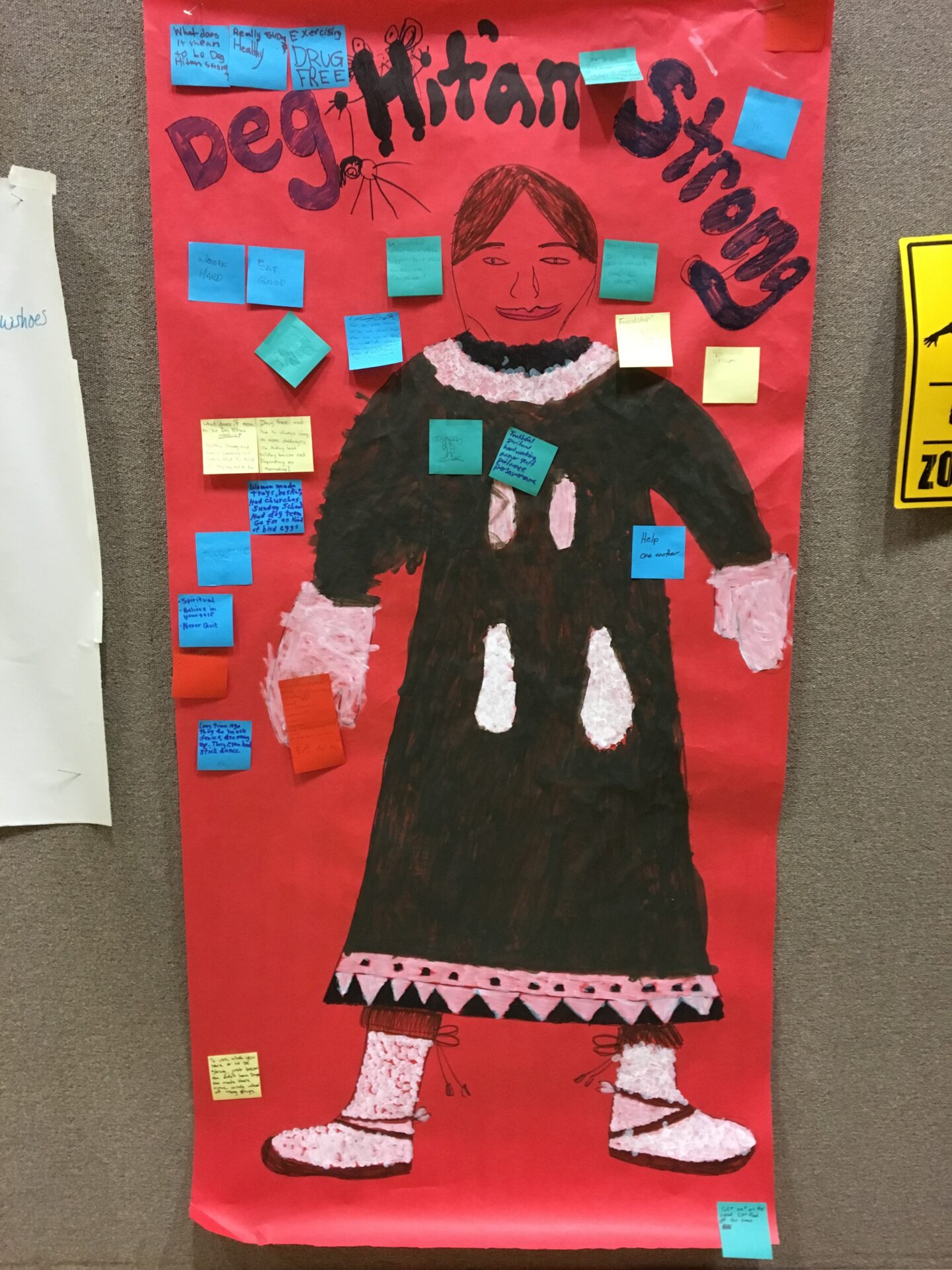 Sonta considers herself a beginner, learning Deg Xinag alongside her students. (Deg Xinag, one of 10 languages spoken in the Doyon region, is the traditional language of the Deg Hit’an Athabascan in the Lower Yukon River villages of Shageluk, Anvik and Holy Cross. Grayling, another village in the Lower Yukon, speaks Holikachuk.) A college course at UAF and introductions to her language over the years in bilingual programs helped; teachers who’ve influenced her include Edna Deacon, Jim Dementi, Katherine Hamilton, Hannah Maillelle, Raymond Dutchman, Ellen Savage, Lucy Hamilton and Phillip Arrow, as well as her own parents and grandparents.
Sonta considers herself a beginner, learning Deg Xinag alongside her students. (Deg Xinag, one of 10 languages spoken in the Doyon region, is the traditional language of the Deg Hit’an Athabascan in the Lower Yukon River villages of Shageluk, Anvik and Holy Cross. Grayling, another village in the Lower Yukon, speaks Holikachuk.) A college course at UAF and introductions to her language over the years in bilingual programs helped; teachers who’ve influenced her include Edna Deacon, Jim Dementi, Katherine Hamilton, Hannah Maillelle, Raymond Dutchman, Ellen Savage, Lucy Hamilton and Phillip Arrow, as well as her own parents and grandparents.
Most of those Elders have contributed to development of the Deg Xinag online learners dictionary. “I reference it constantly,” Sonta says. She believes that language revitalization is among her personal goals and responsibilities.
“I’m thankful to be learning, to be home, on the land, with my family and my students,” she says. “I see my work as a personal path toward understanding more about how my people viewed the world around them. Instead of being a ‘language champion,’ I see myself filling the shoes I was always meant to fill. I’d like to just continue on.”
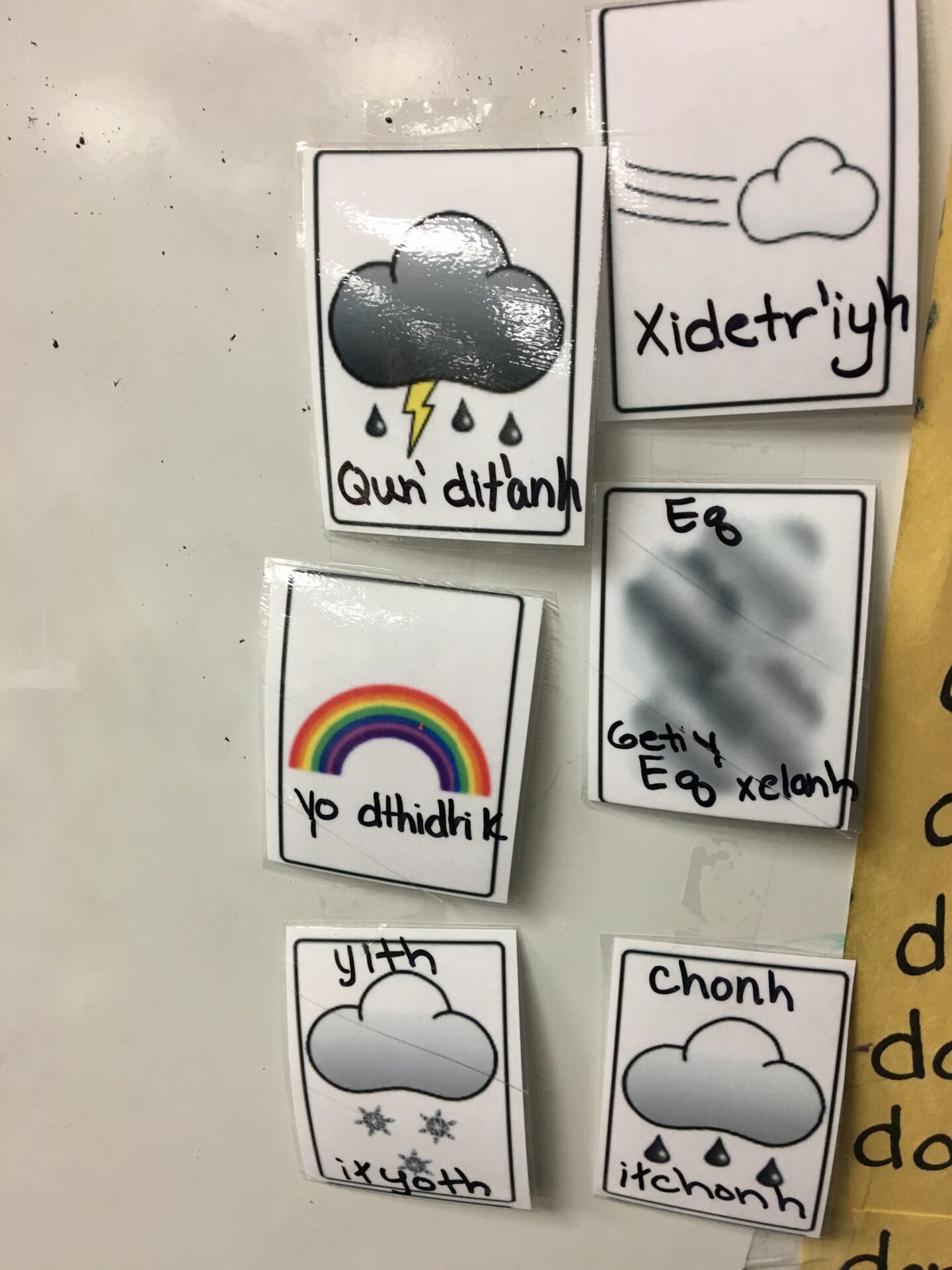 She finds her students inspiring; some may go on to write children’s books or produce videos that extend the language learning community. “I have a few future linguists in my class,” Sonta says. “They see language learning as a priority, just as I do. I also see their love deepen for who they are.”
She finds her students inspiring; some may go on to write children’s books or produce videos that extend the language learning community. “I have a few future linguists in my class,” Sonta says. “They see language learning as a priority, just as I do. I also see their love deepen for who they are.”
She’s grateful to Doyon Foundation – and all speakers and learners of Deg Xinag – for language revitalization efforts: “I encourage anyone to give language learning a try. Start small. Be easy on yourself.”
She advises starting a learning community with family members, finding resources and committing to practice. “Don’t be afraid of getting things wrong. Over time, you’ll realize the right sound.”
Lessons learned
Sonta relies on several techniques. “Think of a baby learning language,” she says. “Start with saying what things are and then move to commands and questions.” Other language-learning strategies include repetition, routine and daily practice; developing her own materials or adapting methods of others; and sharing her language with others.
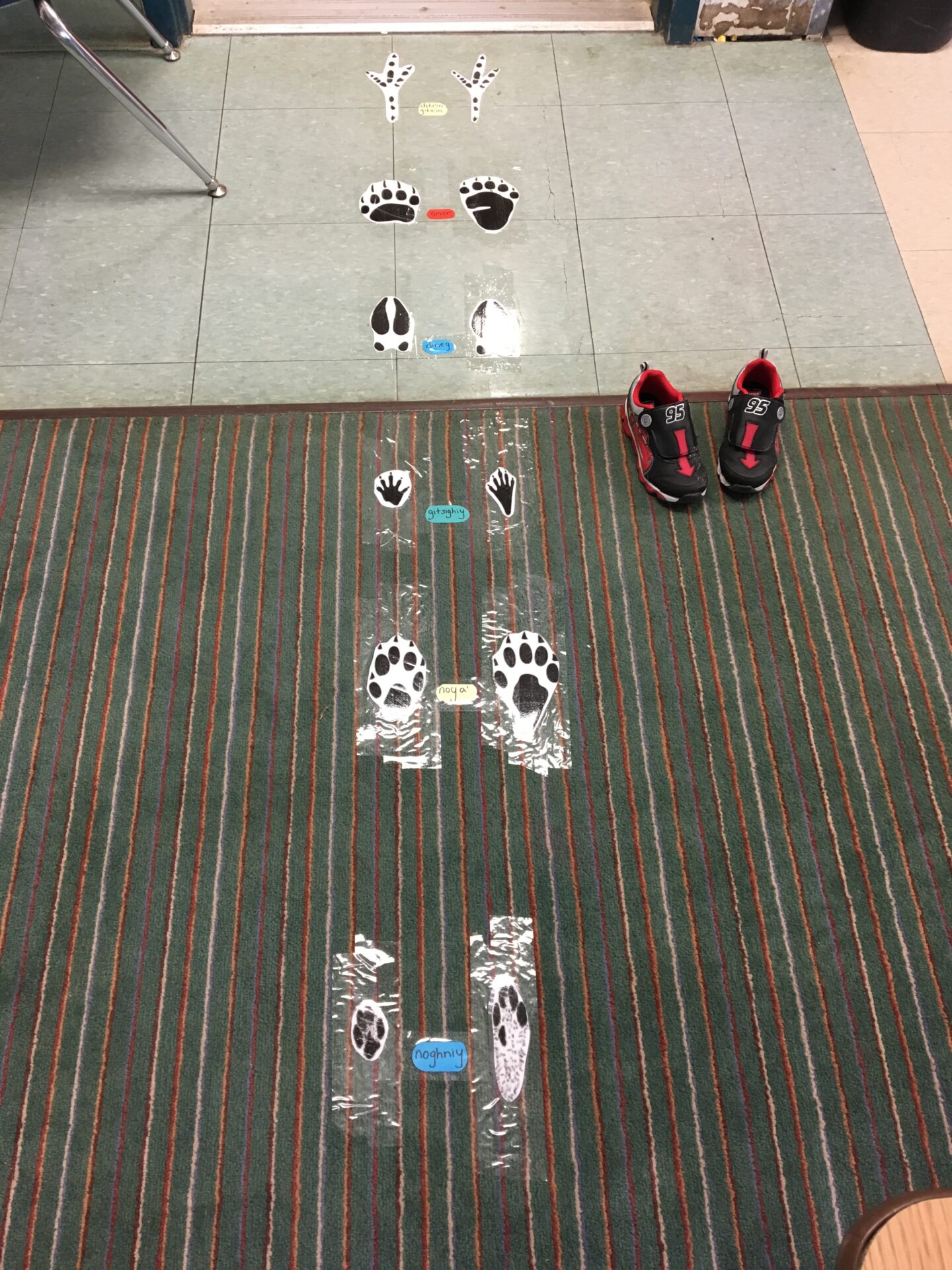 Breaking free of self-doubt is key. Sonta believes that children who are told they’re mispronouncing Native language words may grow up thinking they can’t learn. “Since I told myself that I could learn – and that I could and should teach my own kids and the kids in my classroom – I’ve felt immense freedom,” she says.
Breaking free of self-doubt is key. Sonta believes that children who are told they’re mispronouncing Native language words may grow up thinking they can’t learn. “Since I told myself that I could learn – and that I could and should teach my own kids and the kids in my classroom – I’ve felt immense freedom,” she says.
Sonta uses her students’ morning routine to practice repetition that’s key to language learning. Daily topics like weather, counting, and saying and following instructions all lend themselves to learning Deg Xinag vocabulary. Physical education offers lots of opportunity as well. Carried out in Deg Xinag, childhood games like “Nanhdal, nanhdal, dits’in,” (“Duck, Duck, Goose”) and “Ghingligguk, Noghniy, Ghingligguk,” (“Run, Rabbit, Run”) are fun and efficient ways to practice pronunciation and vocabulary.
Sonta also combines language learning with classroom studies that focus on local activities such as dog mushing, cutting and drying fish, and gathering materials for birch baskets.
At home, she’s teaching her children the names of everyday objects. In the woods, she teaches names of resources like plants and animals. “For now, it’s purely noun identification and short questions in the language.” More conversational phrases will follow.
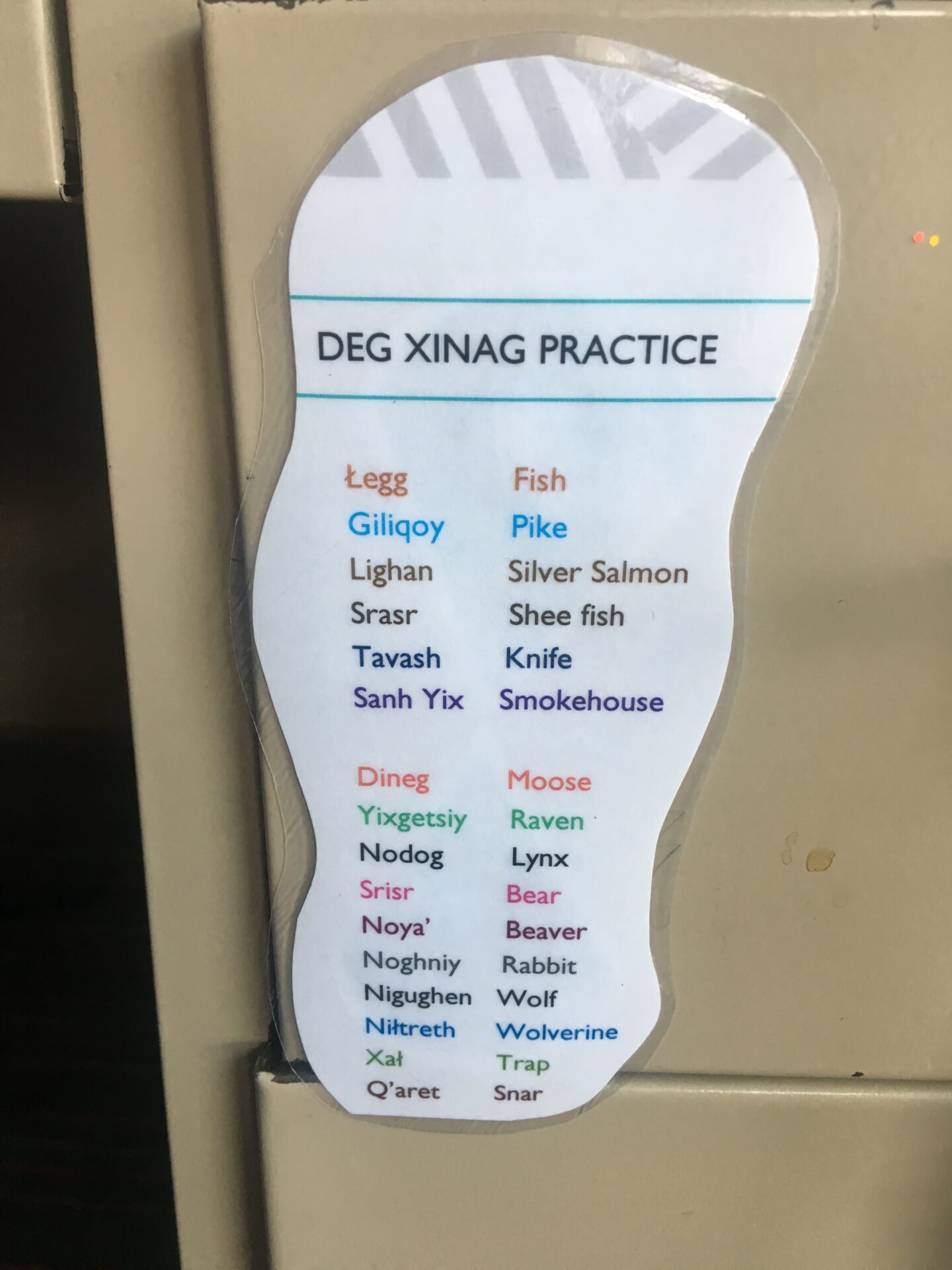 Being able to practice with language-learning materials, as well as learning alongside speakers and other students, is enriching for students at any level. But Sonta says that lack of access need not be a barrier to learning. Instead she advises learners to seek out opportunities on their own and not wait for a class to materialize.
Being able to practice with language-learning materials, as well as learning alongside speakers and other students, is enriching for students at any level. But Sonta says that lack of access need not be a barrier to learning. Instead she advises learners to seek out opportunities on their own and not wait for a class to materialize.
“I have to create it for myself,” she says. She has made language learning a priority for herself, her family and her students. She’s grateful of the efforts of others, including Elders who contribute to online learning materials; staff at Iditarod Area School District who helped document the Deg Xinag language; and faculty like Alice Taff, a retired professor of Alaska Native Languages at UAS.
“I’m thankful that we have one another,” Sonta says.
As Doyon Foundation continues to grow our language revitalization efforts in the Doyon region, we are noticing a group of people who are committed and dedicating their own time to learning and perpetuating their ancestral language. We are pleased to share some of these “Language Champion” profiles with you. If you know a language champion, please nominate him or her by contacting our language program director at [email protected]. Language champions may also complete our profile questionnaire here. You may learn more about our language revitalization program on our website.
